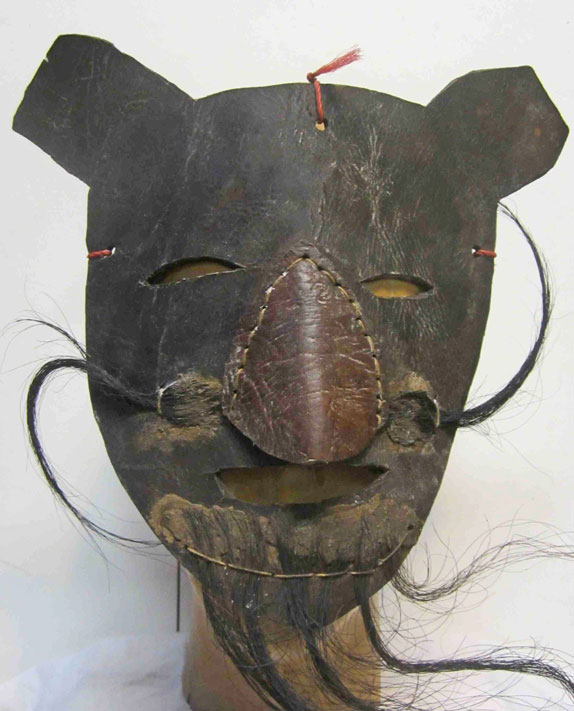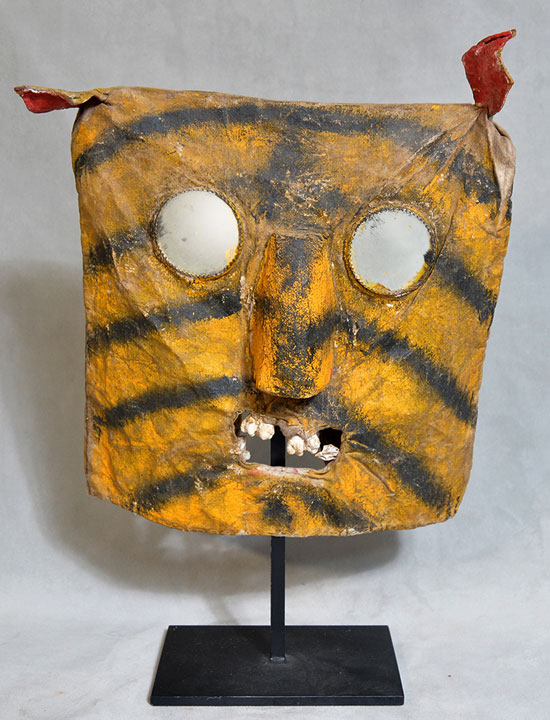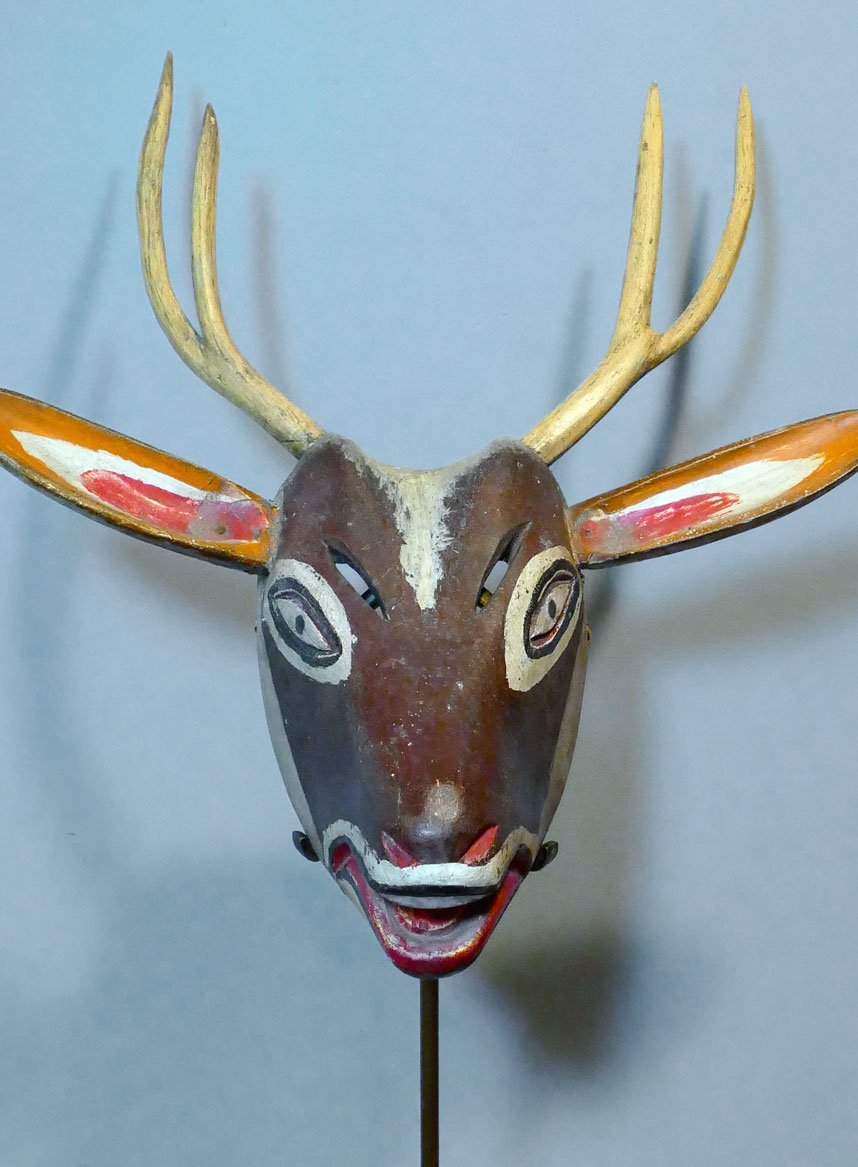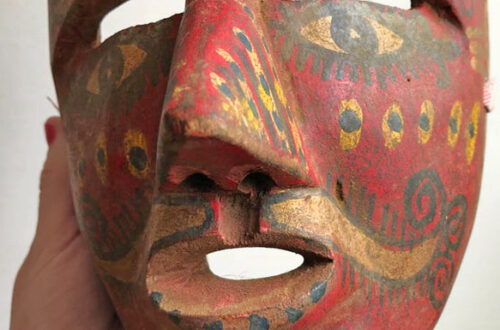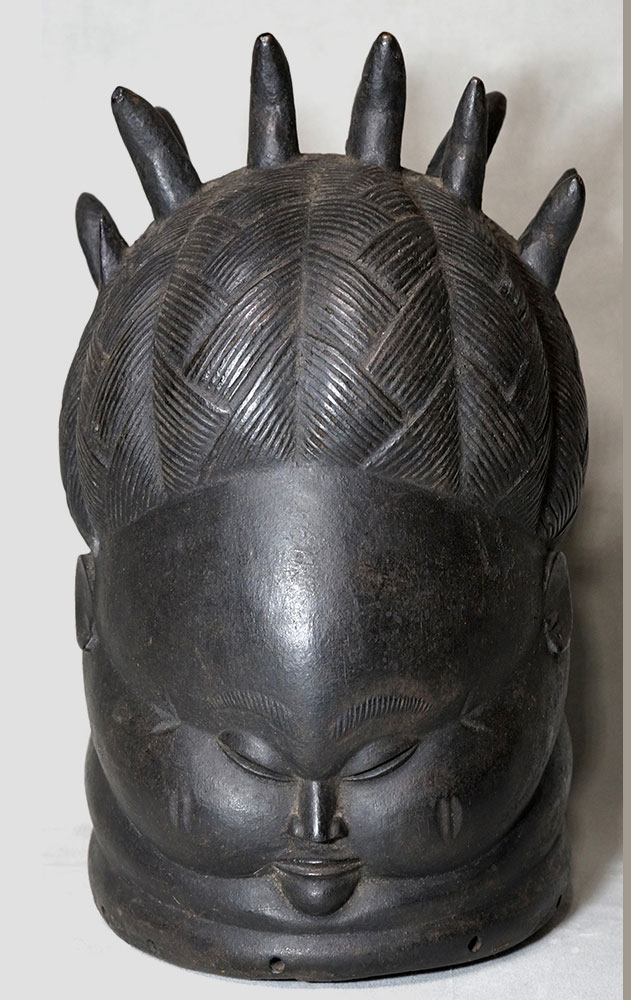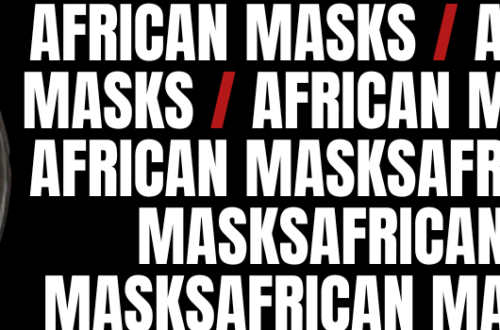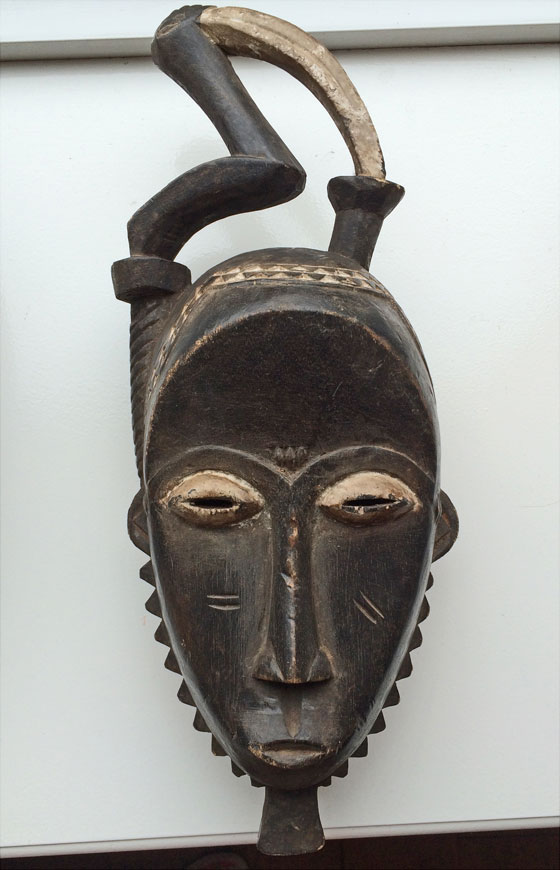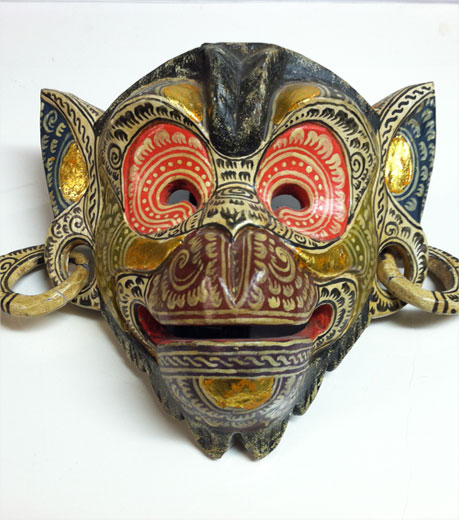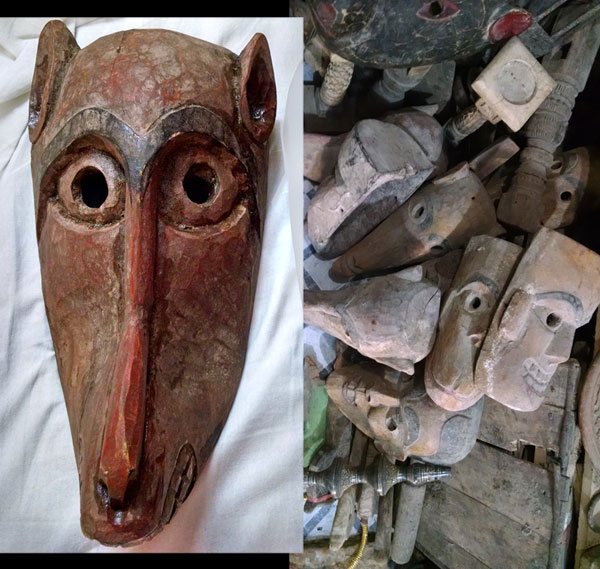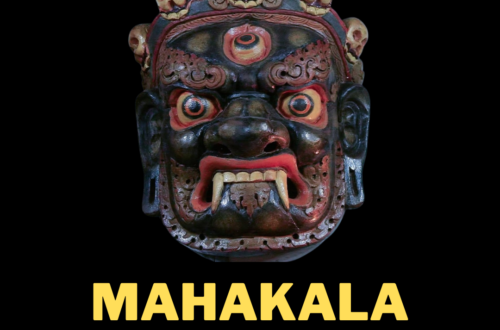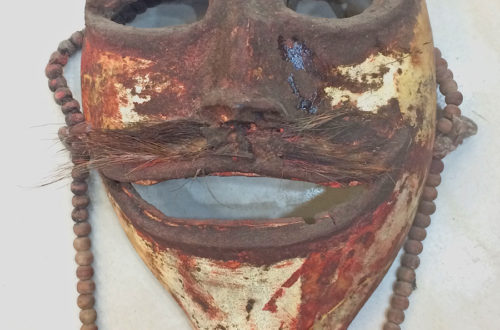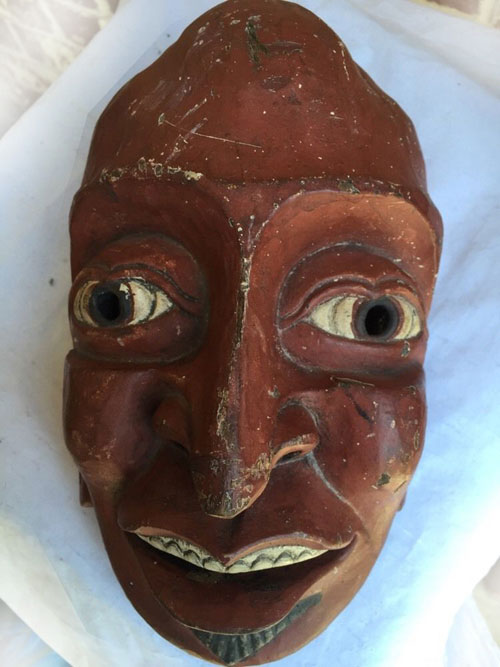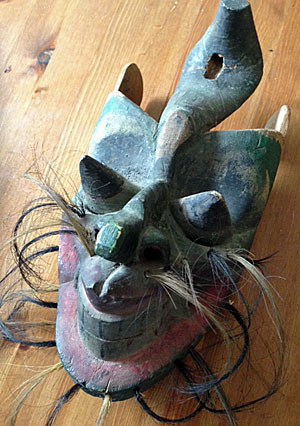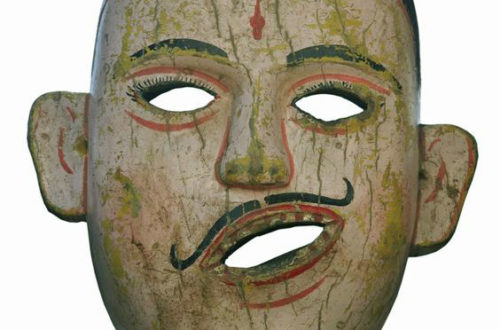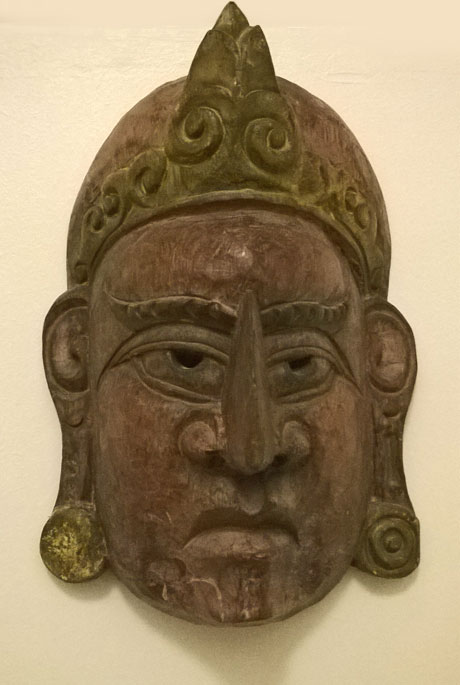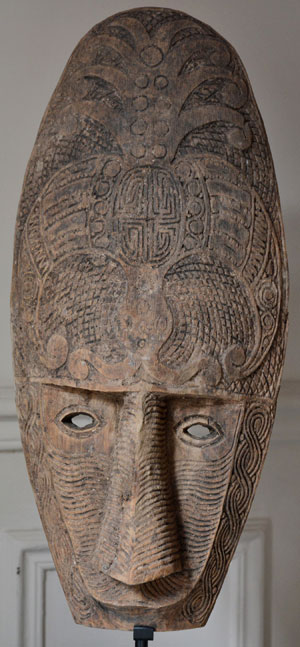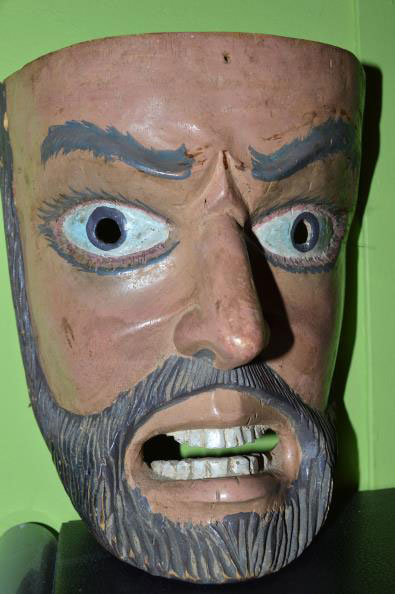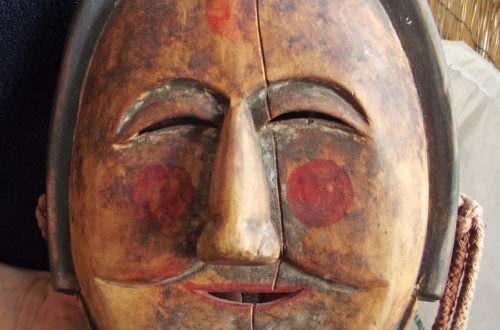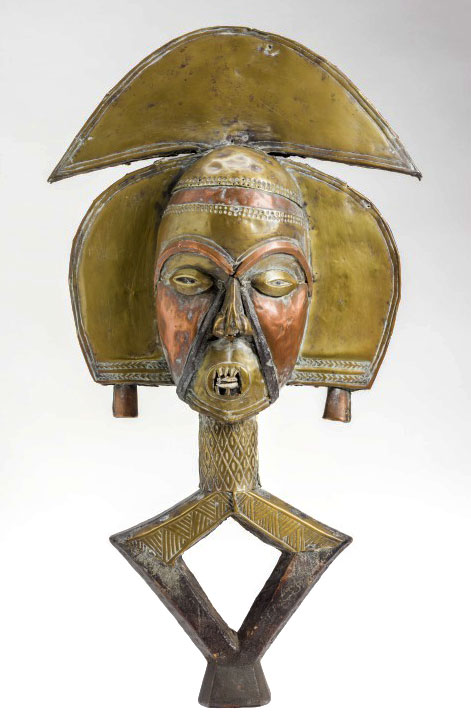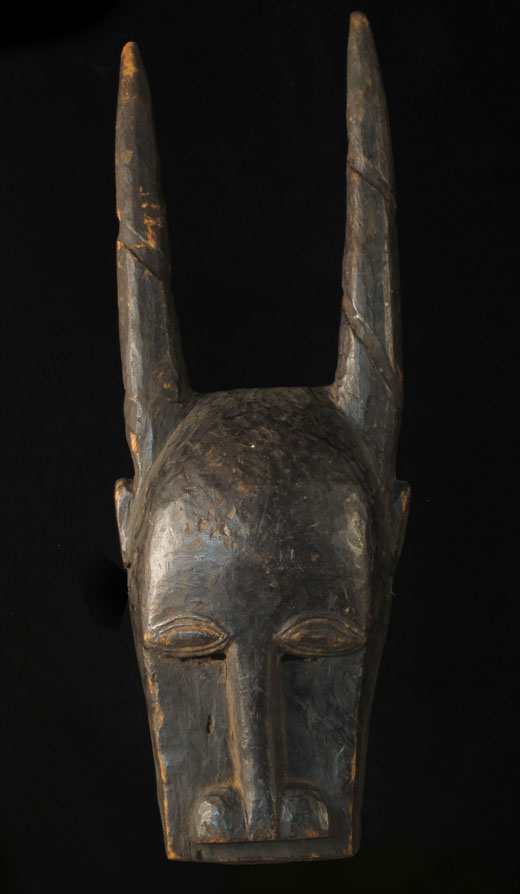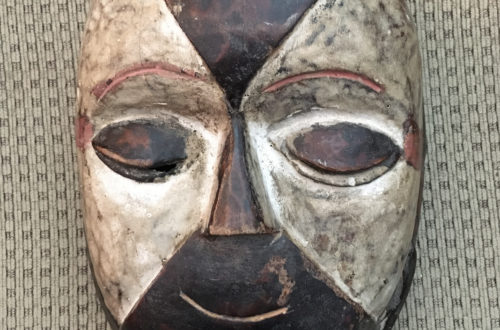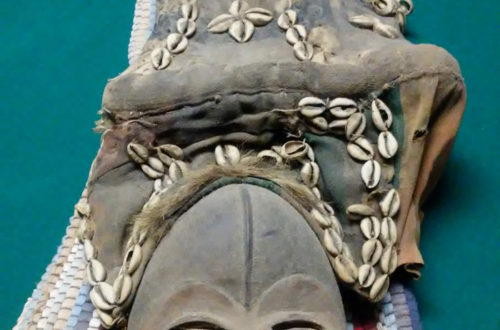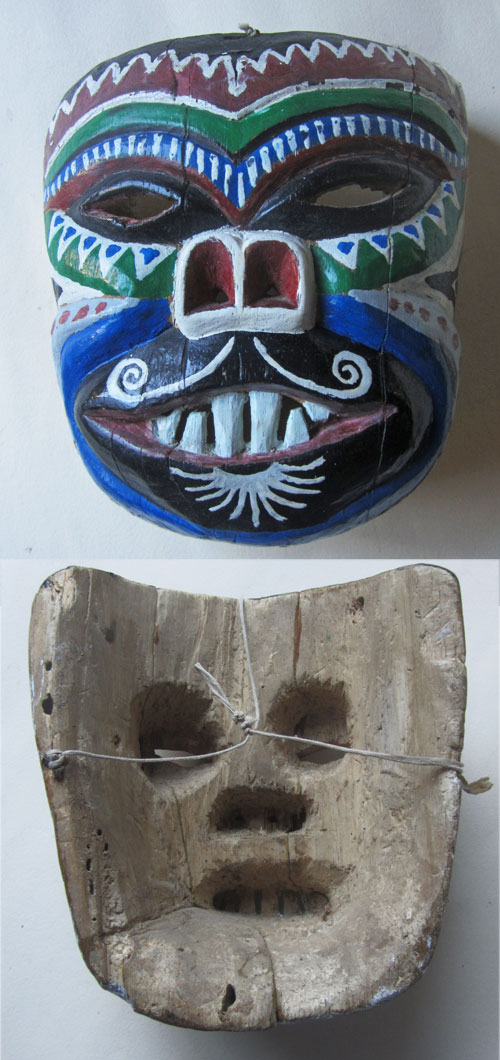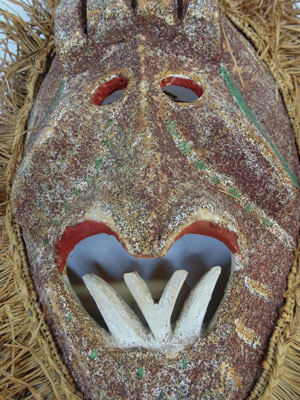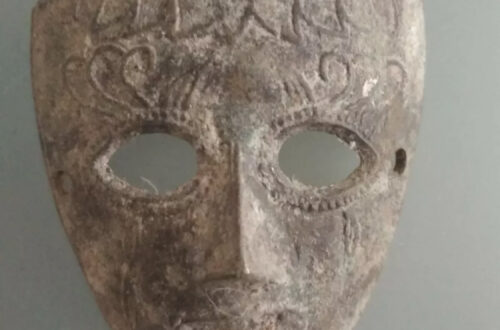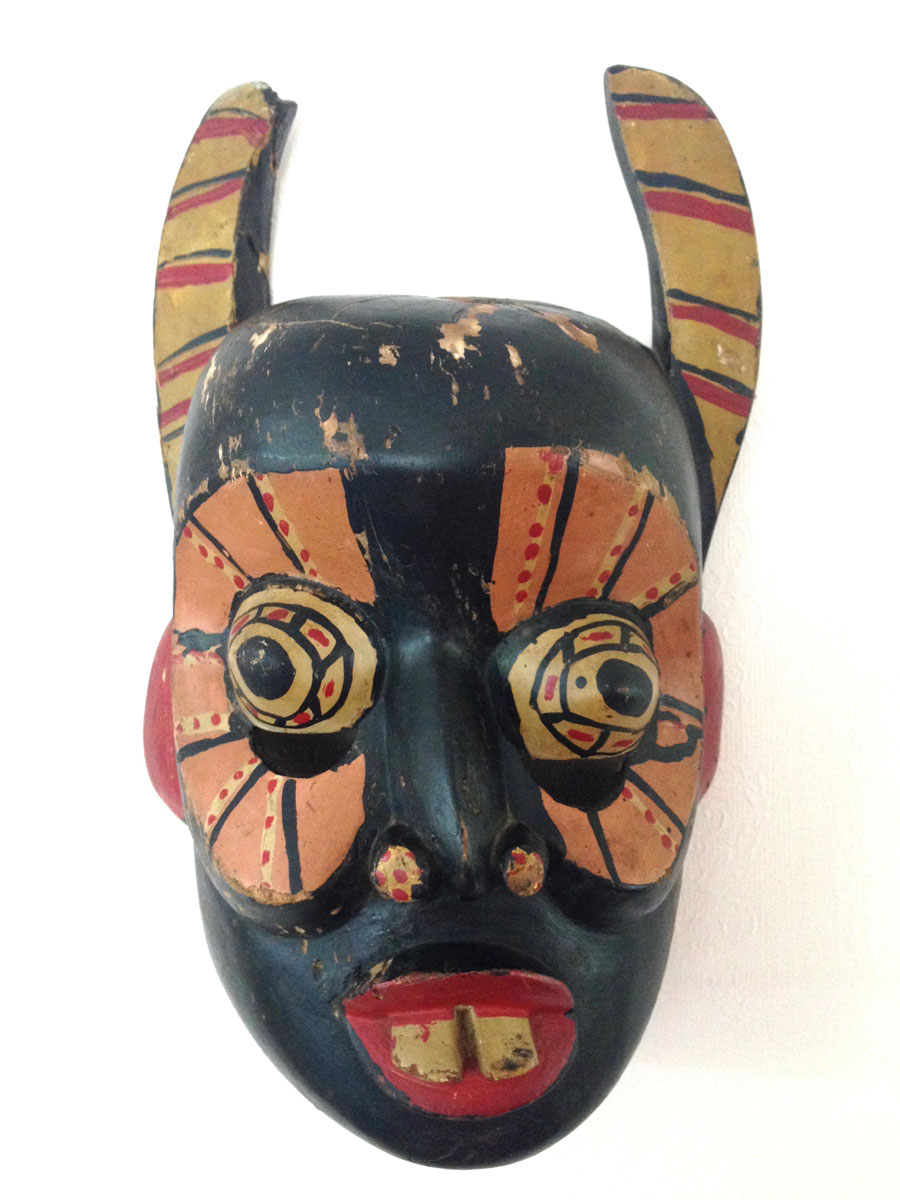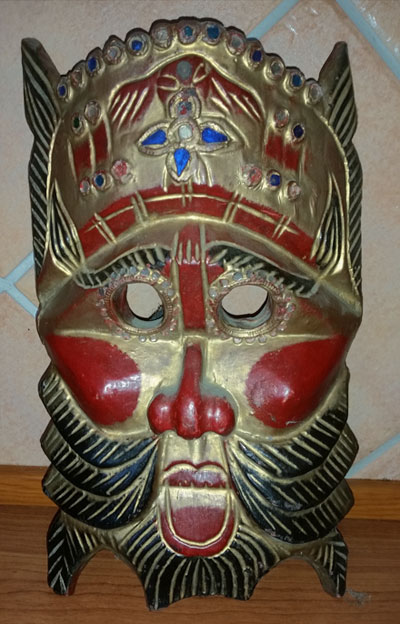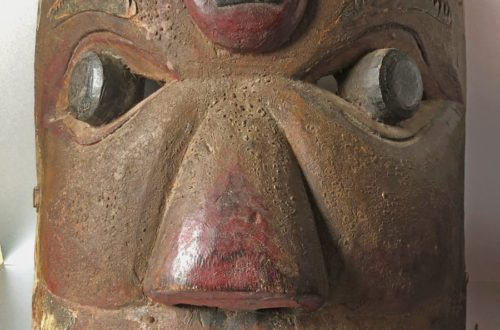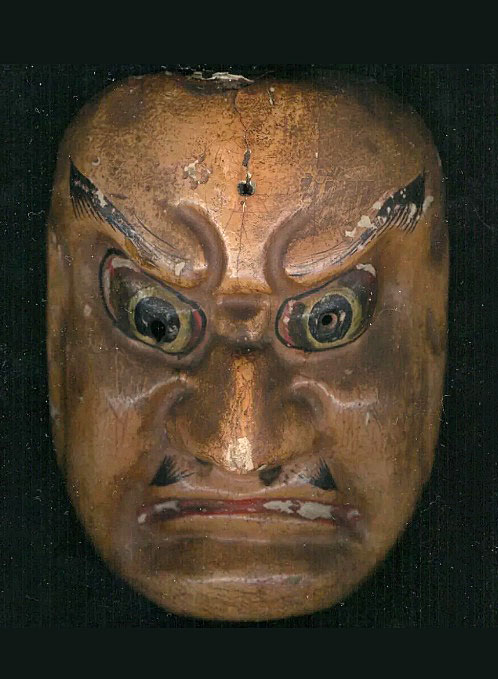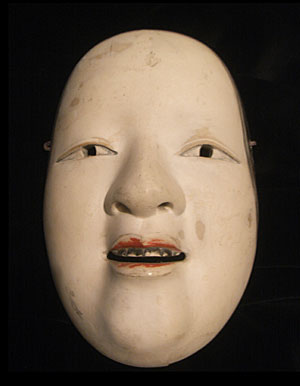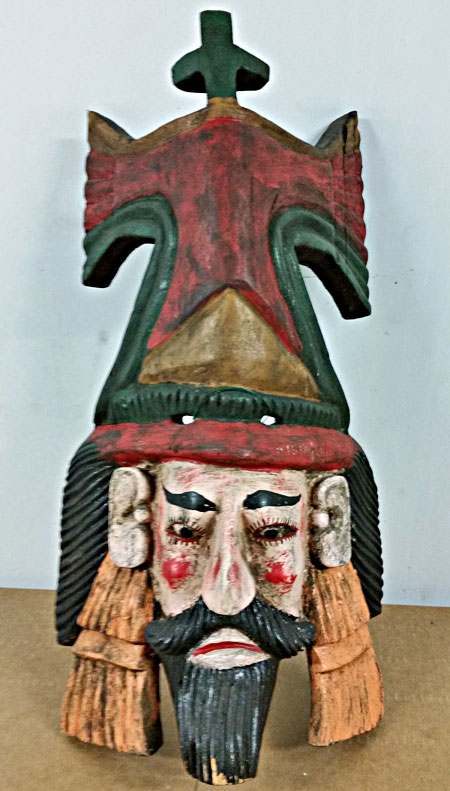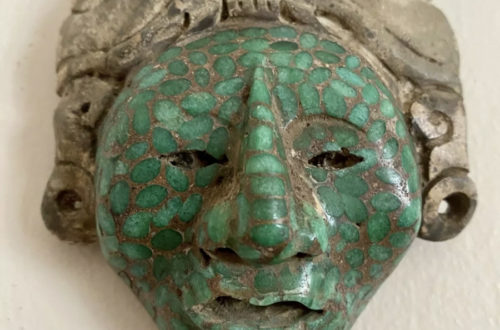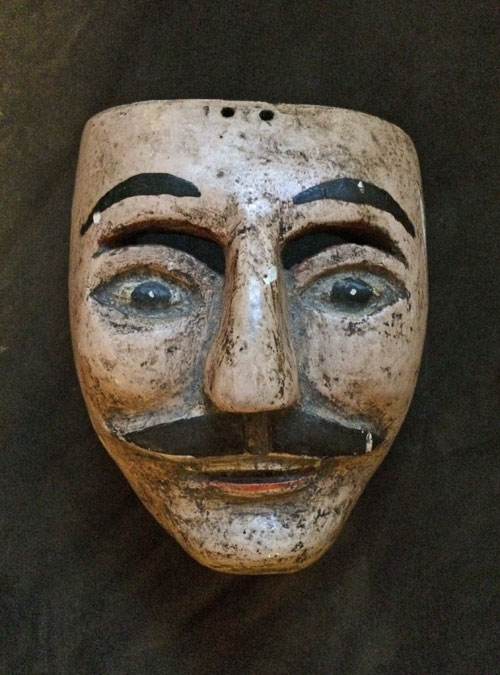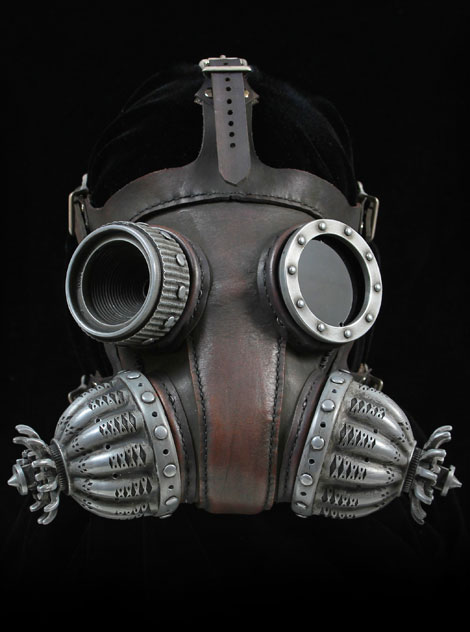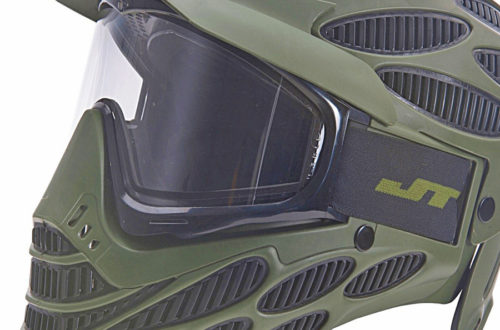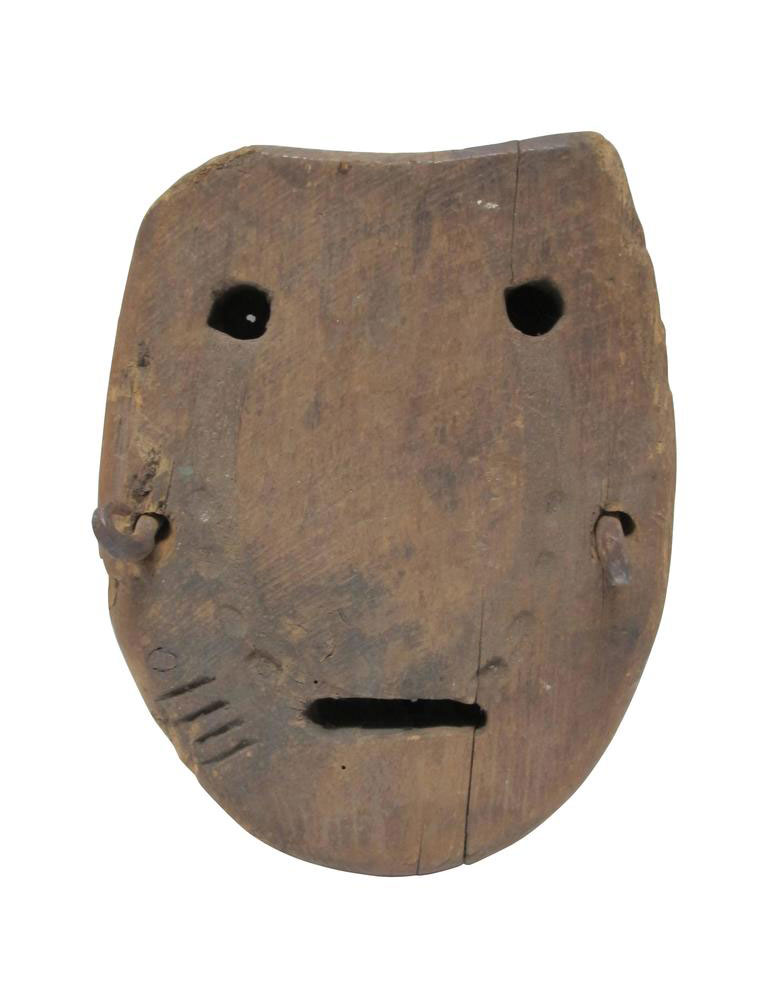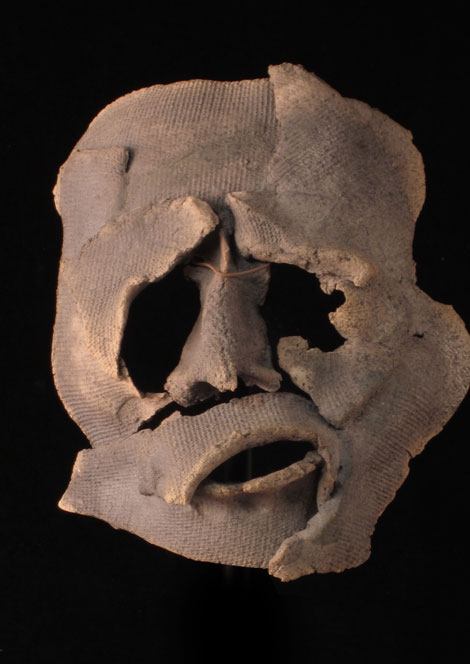Q: Just bought this leather mask and wanted to get your opinion as to it’s origin. It measures 9″ at widest and 10″ top to bottom with horse hair whiskers. Could this be from Chiapas? Thanks, Lois, 858 A: The Tzotzil people, who live in the center of Chiapas and are of Mayan descent, frequently make masks out of leather. But this one is different in design.
-
-
Sande Society mask of the Mende
Q: I just got this from a private auction. I paid less than $100, but I consider it to be very high quality. I already had 2 Mende helmets in my collection, both of reasonably high quality, but when I saw this, I knew it was exceptionally well done. So I bid on it and won at a much lower price than I expected. Aaron, 857 A: I’m so pleased that Aaron is sharing this with us. It’s a famous helmet mask worn only by women, which is very unusual in West Africa.
-
Hanuman the monkey god
Q: Any and all masks that I find “speak” to me. It does not matter if they are collectible, tourist or decorative. My collection reflects very eclectic tastes. I would appreciate any information on this mask. It is carved out of very light wood, well painted and even has a little gold leaf still visible. Mickey, 849 A: This is an artistic representation of Hanuman, the monkey god of Hindu tradition.
-
Great little Sri Lankan mask
Q: Hello Bob, here’s a mask which comes from Sri Lanka. I found it in Tangalle, which is on the South coast if the island. It looks a bit ancient. Just wanted to share it with you… Maillard, 848 A: I thought we ought to share this beautiful mask with our visitors. Sri Lanka has a long history of masquerade which includes several different types of masks (this one is a Kolam), each of which can represent hundreds of different characters.
-
Royal official from Guizhou
Q: Here’s a mask I bought some days ago from a man who told me it came from India, more precisely in Rajasthan, but how can I be sure? It cost me about 12€. What do you think of it? Thanks, Maillard, 847 A: I think this is a Nuo or exorcising mask from Guizhou, a mountainous province in southwest China.
-
Kota Reliquary Figure
This is a Janus reliquary guardian figure from the Gabonese Republic of West Africa. It would have been used by the Kota people in the mid-19th century. It is actually a piece of sculpture, but people who collect African masks always love them. It is made of wood, copper, brass, iron, cowrie shell and measures 23 × 12 × 5 in. This is a promised gift to the Los Angeles County Museum of Art is from Terry and Lionel Bell in honor of the museum’s 50th anniversary.
-
Decorative or authentic
Q: Here again I submit a mask that I have not been able to identify. Made of light weight, balsa like, wood. It measures 7.7″ in height x 7″ in width and 3″ in depth. I’ll be grateful for any input on the origin of this mask. Louis, 823 A: The Mask Man is stumped again. I just can’t remember where I might have seen something like this before. The front is fresh and may have been repainted. The rear could be showing real usage.
-
Thai decorative mask
Q: Can you tell me something about this mask? Its 25 cm high and light. And made of wood. Brian, 822 A: Here is another example of a mask that would never be used in the culture.
-
Mexican decorative
Q: I only have the front view now. The mask is in my air conditioned storage unit. If you are interested, I can certainly take the side and rear. I am interested in your opinion. Additionally, what do you charge for appraisal? The mask is hand-carved wood. Carolyn, 821 A: Personally, I enjoy masks like this. It can be described as a Mexican decorative probably made in the state of Guerrero.
-
Steampunk mask by Tom Banwell
The Mystery Mask blog’s history is mostly about traditional masks from various ethnic groups around the world. This one is much different. Steampunk is a modern movement that gets some of its inspiration from the writings of Jules Verne and H. G. Wells. It celebrates a sci-fi fantasy of a steam-powered age. There are many other kinds of masks for Halloween, parties, celebrations, parades, decorating or just collecting. There are also masks that cover the face for other reasons. Some protect us from possible injury or sickness and others hide the wearer from recognition. These can be quite old or come from unusual places, others are just part of modern-day…
